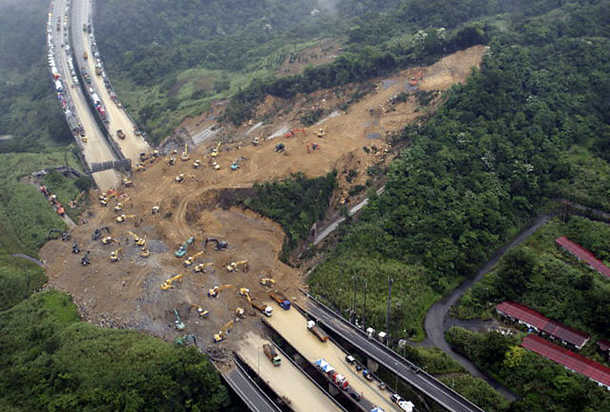What causes earthquakes?
The Earth's crust is divided in continental and oceanic plates called techtonic plates, which are in constant movement and can shift because of underlying movement in the Earth's mantle; and an an earthquake is the sometimes violent shaking of the ground caused by the energy released by these movements.
 |
| Most of them are situated along the Ring of Fire, in the Pacific Ocean. |
The shifting of
one plate causes it to rub against or push under or over an adjacent plate.
The places where two techtonic plates meet are called fault lines, and it's at these fault lines that earthquakes can
occur. Aditionally, earthquakes are often followed by smaller aftershocks, which
can occur over days or weeks as the plates settle into equilibrium.
WHAT ARE THEIR EFFECTS?
The effects of an earthquake may —and actually do— vary depending on its magnitude, which is measured by seismometers
and seismographs that rate it on the Richter scale. This scale was developed in
1935 and it grades the energy released from 1 to 10.
- Earthquakes measuring less than 4.0 magnitude extend over a small area from its epicenter and may not even noticed, much less cause any damage.
- From 4.0 to 5.9 magnitude: they cover a larger area and they are felt. They may move some lamps, shake products off store shelves or even crack some windows but no more serious damage.
- Over 6.0 degrees on the Richter scale, earthquakes can be dangerous and devastating depending, of course, on the distance from it's center; as its energy waves may cause buildings to show visible cracks or even collapse. For instance, the eartquake's measuring 7.0 and 9.0 respectively in Haiti (2010) and Japan (2011) caused massive deaths and major levels of destruction.
In the same way, earthquakes can also lead to other natural disasters, such as:
- Avalanches and landslides: Earthquakes can shake snow, soil, and rock right off a sloped surface.
-
Surface faulting: Surface faulting is a change in the relative positions of things on opposite sides of a fault line. For instance, a straight section of railroad track that runs across a fault line might have a nasty curve in it after an earthquake, rendering it useless for train travel.
- Liquefaction: Liquefaction occurs when water-logged soil acts like a liquid and causes sections of ground to sink or slide. As well as damage to roads and buildings, liquefaction can lead to flash floods.
PREVENTIVE MEASURES
If an
earthquake of a certain intensity occurs, try to focus your attention on
avoiding risks and take into account the following recommendations:
If you are inside a building, it is important to:
- Seek shelter beneath door lintels or solid furniture such as tables or desks, or next to a column or load-bearing wall.
- Stay away from windows, glass, cabinets, partitions and objects that may fall and hit you.
- Do not use the elevator, as the impact of the earthquake could result in its falling or you could get trapped inside.
- Avoid using candles, matches, or any kind of flame during or immediately after the quake, as it could cause an explosion or fire.
If
the shock surprises you outside, it is advisable to:
- Go to an open area and stay away from damaged buildings. After a major earthquake, other smaller ones follow, called aftershocks, that may be strong enough to cause additional damage.
- Try not to approach or enter damaged buildings. The greatest danger from falling debris, coatings, glass, etc. is vertically below façades.
- If travelling by car, stay inside the vehicle and be careful to stay away from bridges, utility poles, damaged buildings or landslide areas.
Try
to answer calls for help and collaborate with the Services involved, but do not
go to the affected areas without being requested to do so by the authorities. People snickering around these areas after a natural disaster not only put themselves in danger but also obstruct rehabilitation work.


Hi! I want to share this reading about a new human activity called "Fracking" that has recently revolutionized the power industry in many countries but it has brought on many concerns. Fracking is said to cause land and water pollution and some small tremors.
ReplyDeletehttp://www.bbc.com/news/uk-14432401